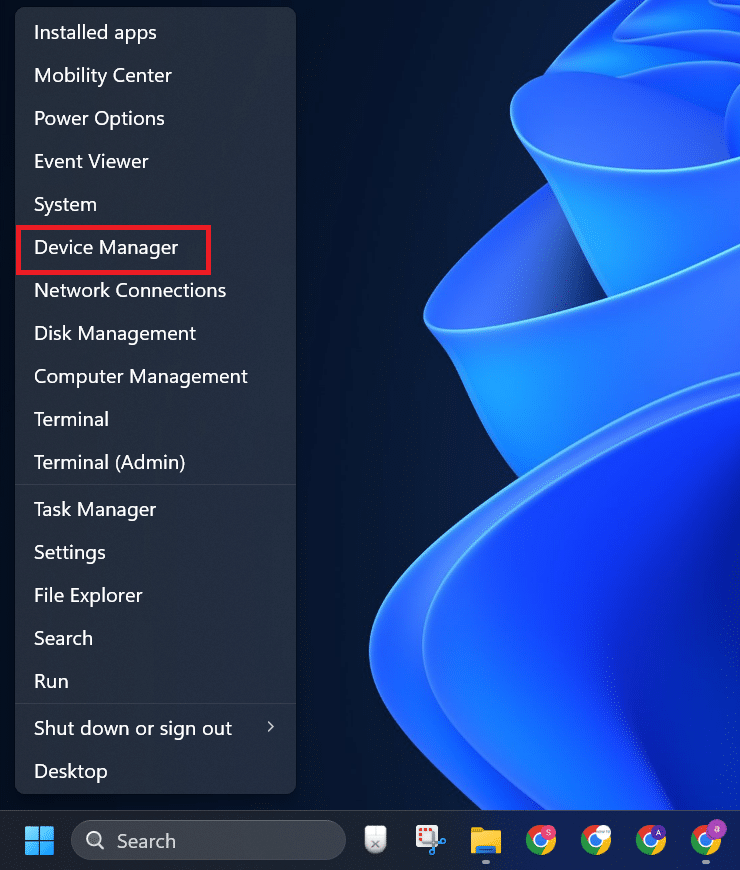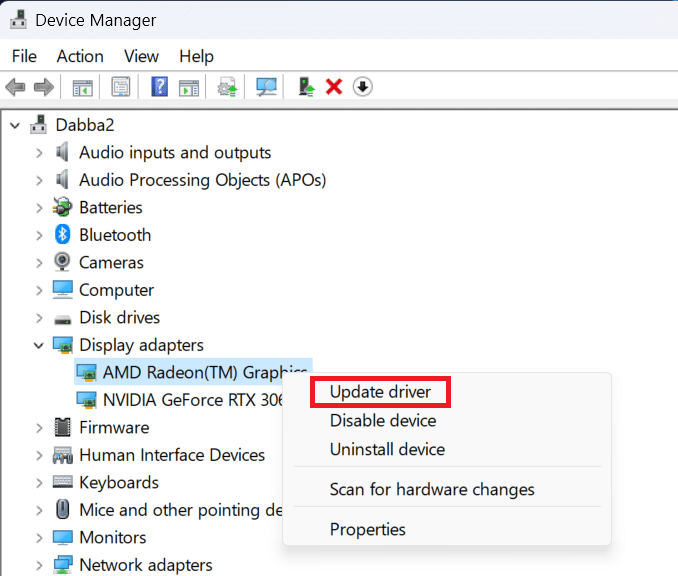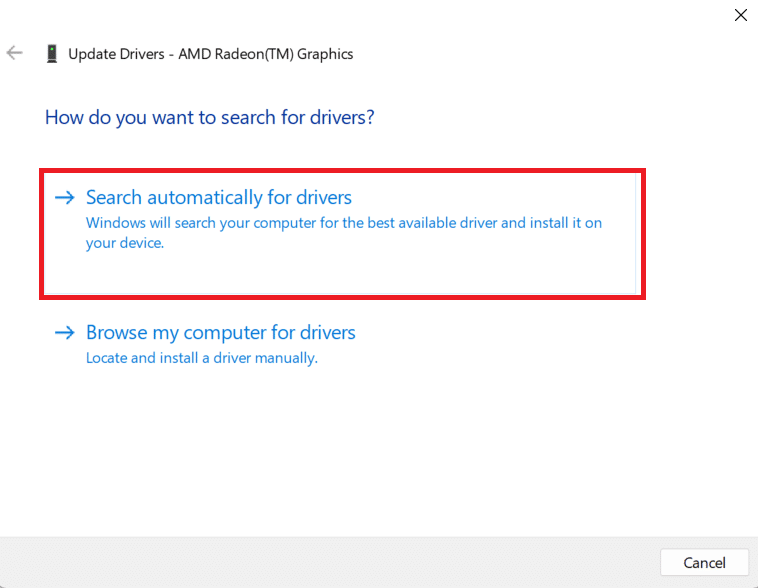Одна из самых сложных в определении причин и исправлении ошибок в Windows 10 — синий экран «На вашем ПК возникла проблема и его необходимо перезагрузить» и код ошибки CLOCK_WATCHDOG_TIMEOUT, который может появляться как в произвольные моменты, так и при выполнении определенных действий (запуск конкретной программы, подключение устройства и т.п.). Сама по себе ошибка говорит о том, что ожидаемое системой прерывание не было получено с одного из ядер процессора за ожидаемое время, что, как правило, мало говорит о том, что делать дальше.
В этой инструкции — о наиболее распространенных причинах ошибки и способах исправить синий экран CLOCK_WATCHDOG_TIMEOUT в Windows 10, если это возможно (в некоторых случаях проблема может быть аппаратной).
Синий экран смерти (BSoD) CLOCK_WATCHDOG_TIMEOUT и процессоры AMD Ryzen

Решил вынести информацию об ошибке применительно к владельцам компьютеров на Ryzen в отдельный раздел, поскольку для них, помимо причин, описанных далее есть и свои специфичные.
Итак, если у вас на борту установлен CPU Ryzen, и вы столкнулись с ошибкой CLOCK_WATCHDOG_TIMEOUT в Windows 10, рекомендую учесть следующие моменты.
- Не устанавливайте ранние сборки Windows 10 (версии 1511, 1607), поскольку в них возможны конфликты при работе на указанных процессорах, что приводит к ошибкам. В дальнейшем были устранены.
- Обновите БИОС вашей материнской платы с официального сайта её производителя.
По второму пункту: на ряде форумов сообщают, что, наоборот, ошибка проявляется после обновления БИОС, в данном случае срабатывает откат на предыдущую версию.
Проблемы с БИОС (UEFI) и разгон
Если в последнее время вы меняли параметры БИОС или выполняли разгон процессора, это может служить причиной ошибки CLOCK_WATCHDOG_TIMEOUT. Попробуйте следующие шаги:
- Отключить разгон процессора (если выполнялся).
- Сбросить БИОС на настройки по умолчанию, можно — оптимизированные настройки (Load Optimized Defaults), подробнее — Как сбросить настройки БИОС.
- Если проблема появилась после сборки компьютера или замены материнской платы, проверьте, есть ли на официальном сайте производителя обновление БИОС для неё: возможно, проблема была решена в обновлении.
Проблемы с периферийным оборудованием и работой драйверов
Следующая по распространенности причина — неправильная работа оборудования или драйверов. Если вы недавно подключили новое оборудование или же только что переустановили (обновили версию) Windows 10, обратите внимание на следующие методы:
- Установите оригинальные драйверы устройств с официального сайта производителя вашего ноутбука или материнской платы (если это ПК), особенно драйверы чипсета, USB, управления электропитанием, сетевых адаптеров. Не используйте драйвер-паки (программы для автоматической установки драйверов), также не воспринимайте серьезно «Драйвер не нуждается в обновлении» в диспетчере устройств — это сообщение не говорит о том, что новых драйверов действительно нет (их нет лишь в центре обновлений Windows). Для ноутбука также следует установить вспомогательное системное ПО, также с официального сайта (именно системное, различные прикладные программы, которые также могут там присутствовать не обязательны).
- В случае, если в диспетчере устройств Windows есть устройства с ошибками, попробуйте отключить их (правый клик мышью — отключить), если это новые устройства, то можно отключить их и физически) и перезагрузить компьютер (именно перезагрузка, а не завершение работы с последующим включением, в Windows 10 это может быть важно), а затем понаблюдать — проявляется ли проблема снова.
Еще один момент, касающийся оборудования — в некоторых случаях (речь о ПК, не ноутбуках) проблема может проявляться при наличии двух видеокарт на компьютере (интегрированного чипа и дискретной видеокарты). В БИОС на ПК обычно присутствует пункт для отключения интегрированного видео (как правило, в разделе Integrated Peripherals), попробуйте выполнить отключение.
Программное обеспечение и вредоносные программы
Помимо прочего, BSoD CLOCK_WATCHDOG_TIMEOUT может быть вызвана недавно установленными программами, особенно теми из них, которые работают с Windows 10 на низком уровне или добавляют свои системные службы:
- Антивирусы.
- Программы, добавляющие виртуальные устройства (можно посмотреть в диспетчере устройств), например, Daemon Tools.
- Утилиты для работы с параметрами БИОС из системы, например, ASUS AI Suite, программы для разгона.
- В некоторых случаях — софт для работы с виртуальными машинами, например, VMWare или VirtualBox. Применительно к ним, иногда ошибка возникает в результате неправильной работы виртуальной сети или при использовании специфичных систем в виртуальных машинах.
Также к такому ПО можно отнести вирусы и другие вредоносные программы, рекомендую выполнить проверку компьютера на их наличие. См. Лучшие средства удаления вредоносных программ.
Ошибка CLOCK_WATCHDOG_TIMEOUT как следствие аппаратных проблем
И, наконец, причиной рассматриваемой ошибки могут быть аппаратные и сопутствующие проблемы. Некоторые из них достаточно просто исправляются, к ним можно отнести:
- Перегрев, пыль в системном блоке. Следует почистить компьютер от пыли (даже при отсутствии признаков перегрева это не будет лишним), при перегреве процессора, возможно, также поменять термопасту. См. как узнать температуру процессора.
- Неправильная работа блока питания, напряжения отличные от требуемых (можно отследить в БИОС некоторых материнских плат).
- Ошибки оперативной памяти. См. Как проверить оперативную память компьютера или ноутбука.
- Проблемы с работой жесткого диска, см. Как проверить жесткий диск на ошибки.
Более серьезные проблемы этого характера — неисправности материнской платы или процессора.
Дополнительная информация
Если ничто из описанного пока не помогло, возможно, могут оказаться полезными следующие пункты:
- Если проблема возникла недавно, а система не переустанавливалась, попробуйте использовать точки восстановления Windows 10.
- Выполните проверку целостности системных файлов Windows 10.
- Часто проблема бывает вызвана работой сетевых адаптеров или их драйверов. Иногда не удается точно определить, что дело в них (обновление драйверов не помогает и т.п.), но, при отключении компьютера от Интернета, выключении Wi-Fi адаптера или вынимании кабеля из сетевой карты проблема исчезает. Это не обязательно говорит о проблемах именно сетевой карты (также могут быть виноваты системные компоненты, неправильно работающие с сетью), но может помочь в диагностике проблемы.
- Если ошибка проявляется при запуске какой-то конкретной программы, возможно, проблема вызвана именно её некорректной работой (возможно, конкретно в этой программной среде и на этом оборудовании).
Надеюсь, один из способов поможет решить проблему и в вашем случае ошибка не вызвана аппаратными проблемами. Для ноутбуков или моноблоков с оригинальной ОС от производителя вы также можете попробовать выполнить сброс на заводские настройки.
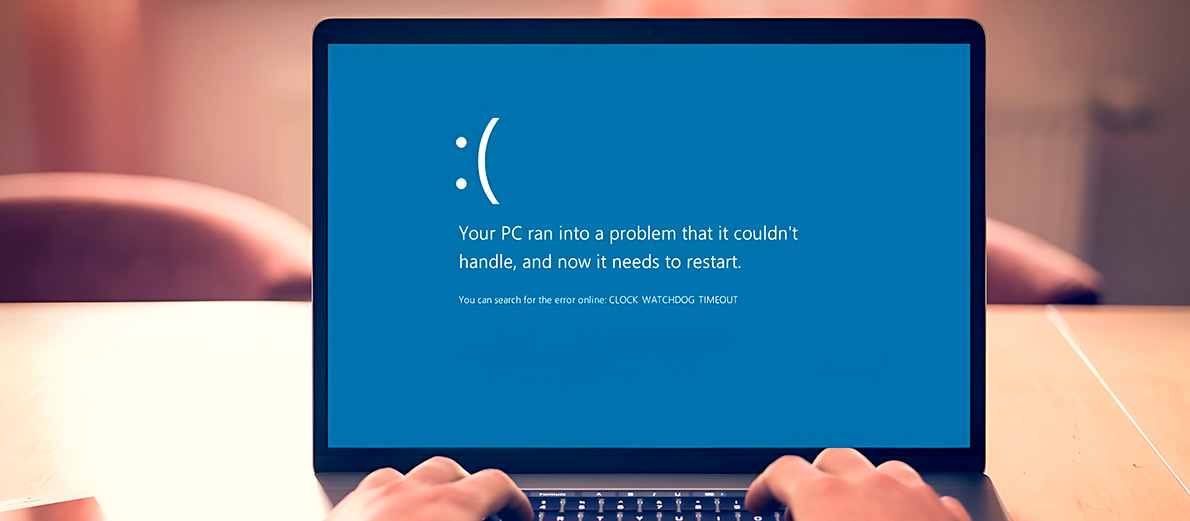
Синий экран с кодом ошибки CLOCK_WATCHDOG_TIMEOUT возникает, когда Windows не получает команды от центрального процессора. Из-за чего это происходит сказать сложно, так как причин огромное количество.
Чаще всего проблема программная, то есть компьютер в порядке, а сбой случается из-за неверно выставленных настроек BIOS, Windows 10 или каких-то других приложений. Далее мы расскажем, что делать, если у вас синий экран с кодом остановки CLOCK_WATCHDOG_TIMEOUT.
Верните BIOS к заводским настройкам
Если вы меняли какие-то настройки в BIOS, например, выставляли XMP профиль оперативной памяти или разгоняли центральный процессор, то с большой вероятностью именно это и вызвало ошибку..
Чтобы избавиться от нее, верните настройки микропрограммы к заводским. Для этого запустите BIOS, перейдите во вкладку «Exit» и найдите пункт «Load Default Settings». Иногда этот пункт называется «Load Optimized Defaults» или «Вернуть настройки к заводским», если BIOS переведен на русский язык. Имейте в виду, что это одно и то же.
Когда вы найдете нужный пункт, выберите его и нажмите «Enter» на клавиатуре. Затем еще раз нажмите «Enter», чтобы подтвердить операцию. После этого компьютер перезапустится с заводскими настройками BIOS, и ошибка CLOCK_WATCHDOG_TIMEOUT исчезнет.
Возвращение микропрограммы к заводским настройкам помогает в большинстве случаев. Если вам очень нужно настроить работу комплектующих в BIOS, то попробуйте выставить другие параметры. Например, для разгона оперативной памяти выберите другой режим XMP или при разгоне процессора, воспользуйтесь PBO. Главное, не повторяйте предыдущих действий.
Сбросьте настройки BIOS
Если возвращение к заводским настройкам не помогло, то сбросьте BIOS. Оговоримся сразу, что это не одно и то же. Сброс микропрограммы и возвращение ее параметров к заводским – это две разные процедуры. Если не помогла первая, то, скорее всего, поможет вторая.
Чтобы сбросить BIOS, открутите боковую стенку компьютера и взгляните на материнскую плату. В ее нижней части найдите надпись «CLR_CMOS». Прямо над ней вы увидите два контакта. Возьмите какой-нибудь металлический предмет, например отвертку, и коснитесь ей этих двух контактов. Само собой компьютер должен быть отключен от электросети. Оговоримся, что вашему здоровью ничего не угрожает и удара током не будет. Когда вы коснетесь двух контактов, BIOS сбросится.
На материнских платах премиум-сегмента вместо двух контактов можно увидеть маленькую кнопку. Она также подписана «CLR_CMOS». Для сброса BIOS нажмите на эту кнопку. Иногда потребуется зажать ее на несколько секунд. Точную информацию вы найдете в документации, которая была в коробке с материнской платой. Если у вас ее нет, то введите название материнки в интернете и найдите техническую документацию на сайте производителя.
Наименование можно узнать на самой плате. Оно будет выглядеть примерно так: «MSI B550M PRO VDH», «Gigabyte Z390 Aorus Elite», «ASRock B660M Pro RS» и так далее. Название материнки обычно записывается возле сокета процессора.
Кнопка сброса BIOS обычно располагается в нижней части материнской платы, но на некоторых моделях ее можно найти вместе с USB-разъемами на задней панели. Тогда вам не придется откручивать боковую крышку системного блока и лезть внутрь ПК. Просто нащупайте эту кнопку с обратной стороны компьютера и нажмите ее.
После сброса BIOS запускайте систему и начинайте ей пользоваться. Проблема CLOCK_WATCHDOG_TIMEOUT должна исчезнуть, но, если ошибка останется, значит BIOS в порядке и сбой вызывает что-то другое. Далее поговорим об этом.
Проверьте диспетчер устройств
Иногда ошибки с синим экраном происходят из-за сбоев в работе других устройств. Мышей, клавиатур, сетевых адаптеров, модулей Bluetooth и так далее. Чтобы убедиться в их исправности перейдите в диспетчере устройств Windows.
Для этого нажмите на кнопку «Поиск». Она располагается на панели задач, рядом с меню «Пуск». В появившемся окне впишите «Диспетчер устройств». Откройте программу и внимательно посмотрите на ее левый столбец, где перечислены ваши устройства. Если напротив одного или нескольких из них стоит желтый треугольник с восклицательным знаком, значит, эти устройства работают со сбоями и, скорее всего, они вызывают ошибку с синим экраном.
- Сначала попробуйте устранить сбои. По очереди нажимайте правую кнопку мыши на каждом устройстве с желтым треугольником и выбирайте пункт «Обновить драйвер».
- Если появляется сообщение, что для этих устройств уже установлены подходящие драйверы, то просто нажимайте «ОК» и закрывайте окно. В таком случае рекомендуется найти драйверы для этих устройств в интернете и скачать их оттуда.
- Проблема в том, что сделать это очень трудно. Найти драйверы в свободном доступе сложно, так как современные версии Windows находят их самостоятельно. Если вы можете найти и скачать установочные файлы драйверов для своих устройств, то обязательно сделайте это.
- После загрузки файлов перейдите в диспетчер устройств. Нажмите правой кнопкой мыши по оборудованию с желтым треугольником и нажмите «Удалить драйвер». Далее запустите файл, который вы скачали в интернете и установите его как любую другую программу. Возможно, что восклицательный знак пропадет и ошибка с синим экраном тоже.
- Если найти драйверы не удалось, то попробуйте отключить устройство с желтым треугольником. Этого не стоит делать в случае, когда устройство очень важное, например сетевой адаптер или звуковая карта. А вот Bluetooth модуль или принтер отключать можно. Без них компьютер будет работать стабильно.
Избавьтесь от вредоносных программ
Если раньше синего экрана не было, но после установки каких-то приложений ошибка CLOCK_WATCHDOG_TIMEOUT начала появляться, то, скорее всего, вы установили вредоносное ПО. Обязательно удалите программы, которые устанавливали в последнее время и проверьте систему с помощью антивирусных утилит.
Покупать антивирусы, например Kaspersky, не обязательно. Существует много бесплатных утилит, которые просканируют вашу систему, найдут вредоносные программы и удалят их. Самые распространенные из них:
- HitmanPro;
- Malwarebytes;
- Dr.Web CureIt.
Максимум, что от вас потребуют эти утилиты, ввести свой электронный адрес. Платить деньги вам придется только если вы захотите установить полные версии этих программ.
Важно, чтобы вы скачивали антивирусные утилиты с их официальных сайтов. В противном случае вместо вы можете установить еще больше вредоносного ПО.
Все антивирусные программы работают по одному алгоритму:
- установка приложения;
- сканирования системы;
- просмотр обнаруженных угроз;
- удаление всех найденных угроз.
Очистка системы от вредоносных программ – это последнее, что можно сделать на программном уровне. Остальные решения проблемы CLOCK_WATCHDOG_TIMEOUT потребуют манипуляций с комплектующими компьютера.
Почистите системный блок от пыли и замените термопасту
Синий экран часто возникает из-за перегрева центрального процессора.
Чтобы снизить рабочие температуры ЦП, разберите компьютер, почистите системный блок от пыли и замените термопасту. Важно не просто пропылесосить системный блок, а вытащить каждое комплектующее и убрать с него пыль. Особенно это касается кулера, который охлаждает центральный процессор. Снимите его вместе с радиатором, продуйте насколько возможно и очистите от пыли. Перед тем, как ставить его обратно уберите старый слой термопасты с крышки процессора и нанесите новый.
В запущенных случаях, полное обслуживание системного блока, снижает рабочую температуру ЦП на 20-30 градусов.
Также синий экран «BSOD» появляется из-за перегрева видеокарты, однако в таком случае вы будете наблюдать на мониторе различные искажения и артефакты перед выключением системы. Если у вас такого нет, то, скорее всего, видеокарта исправна. Значит, ошибку CLOCK_WATCHDOG_TIMEOUT вызывает не она.
Поменяйте местами модули оперативной памяти
Это последнее, что вы можете сделать без помощи специалистов. Просто поменяйте модули оперативной памяти местами и посмотрите на результат.
Также вы можете попробовать запустить компьютер с одной плашкой оперативной памяти. Если ошибка с синим экраном осталась, то поставьте другой модуль ОЗУ. Затем повторите то же самое, только с другим слотом. Например, если раньше плашка стояла во втором разъеме, то поставьте ее в четвертый.
Что делать, если ошибка CLOCK_WATCHDOG_TIMEOUT Windows осталась
В таком случае обращайтесь в сервисный центр. Для решения проблемы нужна полная диагностика персонального компьютера. Чтобы сделать это, нужны не только другие комплектующие, но и специальное оборудование в виде посткарт, мультиметров, осциллографов, микроскопов и так далее.
Разбирать компоненты и пытаться их отремонтировать, не рекомендуется. Самостоятельные попытки исправить неполадки приведут только к новым поломкам. Обращайтесь в профессиональную мастерскую HYPERPC, чтобы не допустить этого. В нашем распоряжении есть все для качественного и безопасного ремонта вашего компьютера. Мы найдем причину появления ошибки CLOCK_WATCHDOG_TIMEOUT и избавимся от нее.
What Is the Windows 10/11 CLOCK_WATCHDOG_TIMEOUT Error?
The CLOCK_WATCHDOG_TIMEOUT error is a Blue Screen of Death (BSOD) that occurs when your processor fails to respond to system interrupts within a given period. In a multiprocessor system, this generally points to communication issues between the processor’s threads or cores.
The error message can look like:
“An expected clock interrupt on a secondary processor, in a multi-processor system, was not received within the allocated interval.”
Such an error implies a hardware-level problem, typically relating to how the CPU executes tasks or does not respond to system interrupts. Interrupts are how your operating system tells the processor to execute certain functions.
If the processor hangs or does not respond on these interrupts, it freezes the system and leads to a BSOD. The root causes might be BIOS misconfigurations, problematic drivers, corrupted memory, or software interference.
🛡️ Tip: In some cases, malware may interfere with low-level processes or corrupt system files. Running a system scan with Outbyte AVarmor can help detect and remove threats that contribute to these critical errors.
Users will lose system reboots, data, and interruptions in active work, particularly if files were being accessed when the system crashed.
What Causes the BSOD clock_watchdog_timeout?
There are a range of hardware and software problems that can result in the CLOCK_WATCHDOG_TIMEOUT BSOD:
- Damaged hardware drivers – Defective driver updates can result in unpredictable behavior and make hardware fail to function properly.
- Incompatible RAM – Adding more RAM than your system can handle can result in system instability.
- Malware or viruses – System files infected with malware can slow performance and result in BSODs.
- Overclocked CPU – Manually overriding your CPU speed can stress hardware beyond capability.
- System file problems – Missing or corrupted files can clash with critical operations.
- Thread communication failure – CPU cores failing to synchronize properly.
- Outdated firmware – An old BIOS version may be incompatible with new hardware or operating system requirements.
- Hardware errors – Low-quality or incompatible components can’t always work together, which sometimes leads to crashes.
If your PC is restarting upon CLOCK_WATCHDOG_TIMEOUT blue screen, you may attempt the following solutions to fix the error and avoid future occurrences.
Effective Fixes for the clock_watchdog_timeout Windows 10/11 Error
Before continuing with the solutions, make sure to save vital files with cloud storage or external drives. This precaution reduces loss of data when troubleshooting.
Disconnect external devices
Disconnect all external peripherals and devices, with only your mouse and keyboard remaining.
Reboot your PC and check if the error still exists. If this eliminates the error, it indicates that one of the devices is malfunctioning or incompatible.
Try plugging them in one at a time to attempt to identify the problematic one.
Stop CPU overclocking
Overclocking the CPU improves its performance but can cause system instability in the form of CLOCK_WATCHDOG_TIMEOUT BSOD.
Restore your CPU settings to default using the BIOS or by executing the same utility you overlocked with (e.g., AMD Ryzen Master or Intel XTU).
Reboot your computer after restoring to original settings to determine if the issue reappears.
Update your BIOS
Your system’s BIOS controls communication between the operating system and hardware. If outdated, it can conflict with your CPU and cause errors.
To update the BIOS:
- Press the Windows key and type
msinfoto check your current BIOS version. - Visit your motherboard manufacturer’s website and find the matching BIOS update.
- Carefully read the update instructions provided from the manufacturer.
- Make sure your device is connected to a power source. Use a desktop UPS to prevent interruption.
- Only do this if you are certain or have a professional guide you, as damaged BIOS updates can ruin your system.
Use Windows Driver Verifier
This Windows built-in tool checks for unsigned or damaged drivers that may be the cause of the BSOD.
- Open Start, type in
Verifier, and run it as an Administrator. - Click on “Create Standard Settings” then Next.
- Click on “Automatically select unsigned drivers.“
- If it doesn’t detect any unsigned drivers, re-do steps and select drivers with unknown providers.
- Restart your computer when prompted.
- After rebooting, open Driver Verifier again and select “Delete existing settings” to reset everything.
Check PC for system file corruption
System file corruption can also result in watchdog timeout errors.
Run a CHKDSK command to check and repair problems on your hard drive.
- Open Command Prompt as Administrator.
- Type
chkdsk /f /r E: (replace E with the letter of your system or affected volume). - If prompted, run the scan after the restart.
Once done, you can also run a system optimization tool like Outbyte PC Repair to detect and fix performance issues that are triggering the BSOD.
Run Windows Memory Diagnostics
Faulty RAM may cause errors like CLOCK_WATCHDOG_TIMEOUT. Utilize the Windows Memory Diagnostic tool:
- Type “Windows Memory Diagnostics” in the Start menu and open the application.
- Choose “Restart now and check for problems.”
- Your system will restart and begin testing RAM for issues. Let the scan finish and analyze the report for any issues.
Update your drivers
Old or corrupted drivers are a common cause of BSOD crashes. Update your drivers manually through Device Manager:
- Right-click the Start button and select “Device Manager.”
- Unfold each category of hardware and right-click on every device to select “Update driver.“
- Click on “Search automatically for updated driver software.”
Do this for all major hardware units, specifically graphics, chipset, and storage controllers.
🔧 Fix Tip: To save time and ensure no outdated drivers are missed, you can use Outbyte Driver Updater, which automatically scans your system and installs the latest stable drivers for all critical components.
Uninstall third-party software
Some third-party apps, say Daemon Tools or VirtualBox, can interfere with system stability. If you recently installed any of them, attempt to uninstall them.
- Press Windows + R, type
appwiz.cpl, and press Enter. - Scroll down the list, right-click the suspicious program, and select Uninstall.
- Restart your PC after uninstalling the program to check if the issue of BSOD is resolved.
Wrapping Up
The CLOCK_WATCHDOG_TIMEOUT error is frustrating, especially if it interrupts your important work or crashes your system in the middle of an operation.
However, with the right set of troubleshooting steps, you can narrow down the cause and fix it. From updating your BIOS and drivers to scanning for memory issues or system file corruption, both hardware and software angles are covered by these solutions.
Be sure to keep your system well maintained, avoid overclocking excessively, and regularly update your drivers and firmware to avoid this BSOD in the future.
💡 Looking for solutions to other BSOD errors?
Check out more troubleshooting guides:11 Methods to Deal with Kernel Mode Heap Corruption Blue Screen on Windows 10/11
Fixing BSOD VIDEO_DXGKRNL_FATAL_ERROR on Windows 10/11
How to Fix the “Attempted Write to Readonly Memory” BSOD Error in Windows 10/11
How to Deal With ‘System Thread Exception Not Handled’ Error in Windows
DPC Watchdog Violation BSOD error in Windows 10/11?
FAQs
What is the clock_watchdog_timeout windows 11 error?
It’s a BSOD that usually points to CPU problems, most often in multi-processor core systems. The error signals that a processor core did not respond to system interrupts as needed.
Is the CLOCK_WATCHDOG_TIMEOUT a hardware or software issue?
It can be either. Though it’s most often linked with CPU, RAM, or driver problems, outdated BIOS or incompatible third-party software can cause it as well.
Can overclocking cause clock_watchdog_timeout?
Yes, overclocking is employed to accelerate the CPU and can cause instability, leading to this BSOD. Reversing the CPU settings to default can fix it.
How do I check for memory problems?
Employ the Windows Memory Diagnostic tool to scan your RAM for errors. It runs automatically after a reboot and provides a verdict on memory integrity.
Will updating drivers fix the issue?
For certain. Obsolete or troubled drivers are common culprits. Updating them through Device Manager or programs like Outbyte PC Repair can help clear up driver mistakes.
Blue Screen of Death errors (BSOD) on Windows are pretty common.
Some go away after you restart the PC, while others can persist and prevent you from booting to the desktop.
CLOCK_WATCHDOG_TIMEOUT is one such BSOD error affecting Windows 10 and 11 users.
This error code indicates a communication problem between your PC and the CPU.
This error appears when a System takes longer than the time allotted by the CPU to provide an output.
Many users report this error while playing games, running heavy applications or while copying large files in Windows.
Table Of Contents
- Why Does a Clock Watchdog Timeout Error Occur?
- How to Fix Clock Watchdog Timeout Error
- 1. Check Hardware Connections
- 2. Update Drivers
- 3. Check RAM With Windows Memory Diagnostic Utility
- 4. Disable Overclocking
- 5. Reset BIOS Settings
- 6. Run a SFC and DISM Scan
- 7. Identify Problems Using Safe Mode
- 8. Reinstall Windows
- Fix BSOD Errors
Why Does a Clock Watchdog Timeout Error Occur?
- Excessively overclocking the RAM, CPU, or other system components.
- Outdated or corrupt system drivers.
- A loosely connected system component or cables.
- Faulty or damaged system components.
How to Fix Clock Watchdog Timeout Error
Try the following methods to resolve this BSOD error in Windows.
1. Check Hardware Connections
Loose or ill-fitted cables and components such as RAM, GPU, or CPU can result in random BSOD errors. So, open your PC cabinet and check if everything is snugly fitted.
While you are at it, remove the RAM and GPU, clean their connection heads, and reseat them in their respective slots.
2. Update Drivers
Driver corruption is a common reason for Windows to run into BSODs while trying to access hardware. To fix this, you must update all the system drivers using the Device Manager. Here’s how:
- Right-click on the Start button and select the Device Manager option.
- Find the device with a yellow warning sign and right-click on it. Select the Update Driver option.
- Click on the Search automatically for drivers option.
- Close the window after the download completes.
If you don’t find any updates via the Device Manager, download them from the manufacturer’s website.
If you use a laptop or a pre-built rig, you can use the official driver download tool to install all the updates, including BIOS updates.
Otherwise, you must download drivers for each system component (CPU, GPU, Bluetooth, Wi-Fi, etc) from their respective manufacturer’s websites.
3. Check RAM With Windows Memory Diagnostic Utility
Windows Memory Diagnostic is an inbuilt tool for finding problems with system memory. You don’t need to install it separately.
Here’s how to use it:
- Press Win + S to open Windows Search. Type mdsched in the text box and press Enter.
- Click on the “Restart now and check for problems” option.
- Wait for the PC to restart and check the RAM. It will then reboot to the desktop.
- Log in to your PC. If everything’s fine, you will see the “No memory errors were detected” notification.
Otherwise, your RAM needs reseating or replacement.
4. Disable Overclocking
Overclocking gives you a slight boost in performance, but that tends to raise the system temperature.
Windows can encounter the CLOCK_WATCHDOG_TIMEOUT error if your PC is overheating.
You must turn off any overclocking settings you have applied from the BIOS or via a third-party app.
After removing the overclocking settings, check the system temperature using Core Temp or HWiNFO for signs of overheating.
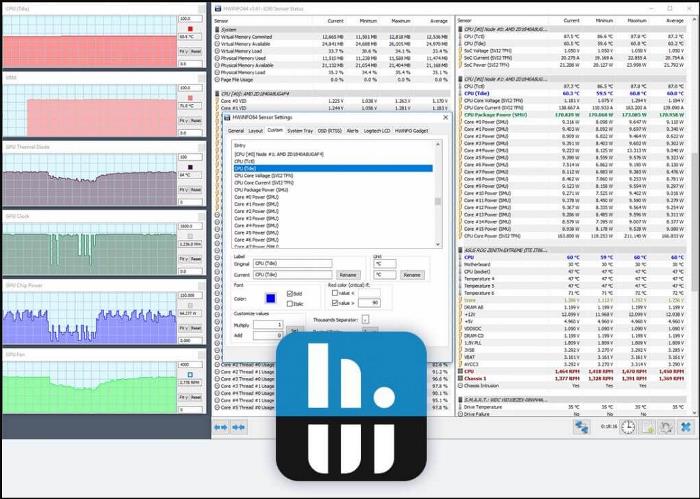
You can also use programs like Prime95 to stress test the CPU and check for faults.
5. Reset BIOS Settings
After updating the BIOS, reset the settings to its default configuration. Here’s how to do it:
- Restart your PC and press the appropriate F-key or Esc key to open the BIOS settings.
- Navigate to the Exit tab.
- Select the Load Default Settings option using the arrow keys and press Enter.
- Select the Yes option and press Enter.
- Exit the BIOS and boot to the desktop.
- Check if the Clock Watchdog Timeout error occurs now.
6. Run a SFC and DISM Scan
SFC and DISM can fix corrupt system files and service the Windows Image. For some users, missing system files produced this BSOD error, so it is worth a try:
- Press Win + S to open Windows Search. Type cmd in the text box and press Ctrl + Shift + Enter keys.
- Click on the Yes button to open the Command Prompt.
- Type sfc /scannow command and press Enter.
- After that, run the DISM /Online /Cleanup-Image /RestoreHealth command.
- Wait for both scans to complete and restart your PC.
7. Identify Problems Using Safe Mode
You can quickly identify a problematic app using Safe Mode. This is also useful if you cannot boot to the desktop and are stuck in the Windows Recovery Environment (WinRE).
Repeat the following steps:
- On the Windows Recovery Environment page, click on the Troubleshoot option.
- Click on the Advanced options.
- Select the Startup Settings option.
- Click on the Restart option.
- Press the F4 key to boot into Safe Mode.
- Now, check if the system runs fine without any issues.
You can also try applying a System Restore point to check if a recent app or update installation is causing the error.
8. Reinstall Windows
If the Clock Watch Timeout error still occurs, you must reinstall Windows. To do that, create a bootable USB installation media with Rufus or Media Creation tool.
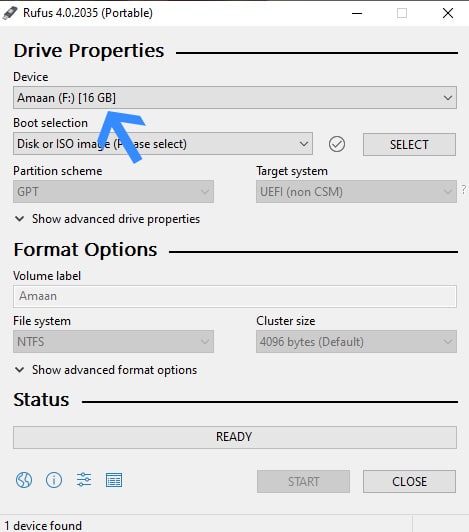
Plug in the USB drive and select it on the Boot Devices page. Install Windows and all the system drivers to check if the BSOD error is fixed.
Otherwise, you must get the hardware checked by a technician and replace the faulty parts with new ones.
Fix BSOD Errors
These were the eight methods to fix the Clock Watch Timeout error in Windows 10 and 11.
Inspect the hardware connections, update drivers, and check the RAM.
Then, turn off overclocking, reset BIOS settings, and use SFC and DISM scans to fix file corruption—reinstall Windows as a last resort.
How to Fix CLOCK_WATCHDOG_TIMEOUT Error in Windows 10
CLOCK_WATCHDOG_TIMEOUT is a Blue Screen of Death (BSoD) error stating that the computer encountered a problem it could not handle and the machine needed to restart.
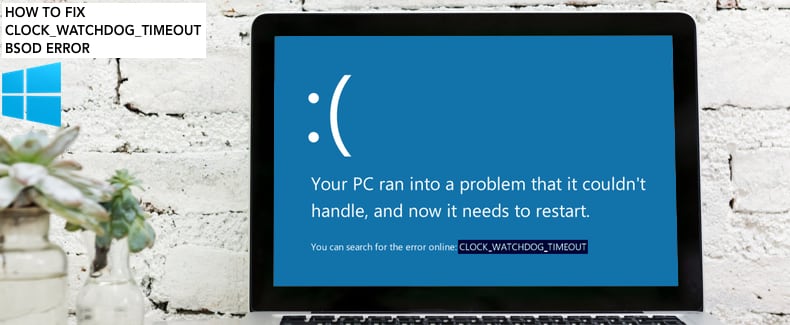
What Is CLOCK_WATCHDOG_TIMEOUT?
The CLOCK_WATCHDOG_TIMEOUT error usually indicates a delayed clock interruption in a multiprocessor configuration. In other words, there is an issue with the processor, and it cannot function properly.
This error can be caused by wrong or corrupt hardware drivers. It may also occur due to Random Access Memory (RAM) issues, the CPU (Central Processing Unit) being overclocked, and BIOS problems.
The good news is that several solutions to the CLOCK_WATCHDOG_TIMEOUT error are described in the guide below.
Note: If you cannot log into Windows and continually receive this error, you must boot Windows into Safe Mode with Networking.
If you are unsure how to boot into Safe Mode with Networking, read this guide — use the «Interrupt Windows Boot Process» method described at the link. Alternatively, you can use a Windows Installation CD/DVD/USB and boot Windows into Safe Mode with Networking using the Automatic Repair (Advanced Startup) screen.
Video Showing How to Fix CLOCK_WATCHDOG_TIMEOUT Error
Table of Contents:
- Introduction
- Disconnect External Devices
- Update BIOS
- Run Windows Memory Diagnostic Tool
- Uninstall Third-Party Software
- Run Windows Troubleshooter
- Update Drivers
- Run System File Checker
- Fix Windows Registry
- Scan Your System for Malware
- Temporarily Disable Your Antivirus
- Video Showing How to Fix CLOCK WATCHDOG TIMEOUT Error
Download Computer Malware Repair Tool
It is recommended to run a free scan with Combo Cleaner — a tool to detect viruses and malware on your device. You will need to purchase the full version to remove infections. Free trial available. Combo Cleaner is owned and operated by Rcs Lt, the parent company of PCRisk.com read more.
Disconnect External Devices
The first method that might fix the «CLOCK_WATCHDOG_TIMEOUT» error is to disconnect connected external devices. A connected external device/peripheral might be interfering with the operating system. Disconnect all peripherals and external devices, leaving only the mouse and keyboard connected, and then restart the computer.
Check if you still get this error. If the problem is fixed, one of the peripherals or external devices might be damaged or faulty and causing the problem. In this case, replace that peripheral or external device.
[Back to Table of Contents]
Update BIOS
BIOS (Basic Input Output System) is software stored on a small memory chip on the motherboard. You might need to access the BIOS to change how the device works or assist in troubleshooting a problem. The hardware responsible for the «CLOCK_WATCHDOG_TIMEOUT» error may be having problems, and updating the BIOS might fix the problem.
Remember that updating the BIOS is a procedure for advanced users — if not performed properly, it can cause permanent hardware damage.
To update the BIOS, go to the motherboard manufacturer’s website and download the latest BIOS version for the motherboard. There should be a manual describing how to update the BIOS — ensure that you read this carefully. If you do not know how to update the BIOS, find an expert to avoid damage to your computer.
[Back to Table of Contents]
Run Windows Memory Diagnostic Tool
If there are problems with RAM (Random Access Memory), first run the Windows Memory Diagnostic tool. Windows Memory Diagnostic is a comprehensive memory test tool that is easy to use. To launch it, type «windows memory diagnostic» or «mdsched» in Search and click the «Windows Memory Diagnostic» result.

To run diagnostics, you will need to restart your computer. You will be asked if you want to restart now or run it the next time you start the computer. When you restart your computer, Windows Memory Diagnostic Tool will start automatically. You will see the testing process and results on your screen.

[Back to Table of Contents]
Uninstall Third-Party Software
Some recently installed software may be causing the «CLOCK_WATCHDOG_TIMEOUT» error. Some users have reported that software such as Daemon Tools, MacDriver, Alcohol 120%, VirtualBox, and other virtual image managers caused the error. After uninstalling it, the blue screen error was removed.
If you have installed software recently (especially the software mentioned above), we recommend you uninstall it. To do so, press Windows key + R or right-click the Start menu and select «Run» from the contextual menu. This will open the Run dialog box.

Type «appwiz.cpl», and press Enter on your keyboard — this will launch the «Programs and Features» window.

In the Programs and Features window, locate the program and uninstall it by right-clicking on it and choosing «Uninstall» from the drop-down menu. Restart your computer and see if you still get this error.

[Back to Table of Contents]
Run Windows Troubleshooter
Windows includes several troubleshooters designed to quickly diagnose and automatically resolve various computer problems. In this case, you will need to use the Blue Screen troubleshooter.
Go to Settings, type «troubleshoot», and select «Troubleshoot» from the list to start troubleshooting.

Now find «Blue Screen» under Find and fix other problems and select it. Click «Run the troubleshooter» and follow the instructions. Windows will try to troubleshoot the error that caused Windows to stop or restart unexpectedly.
See if this troubleshooter can fix the «CLOCK_WATCHDOG_TIMEOUT» error. Additionally, we recommend running the «Hardware and devices» troubleshooter.

[Back to Table of Contents]
Update Drivers
Blue Screen of Death errors are usually driver-related errors. A device driver tells the operating system and other software how to interact with particular hardware. If the appropriate driver is not installed, the device might not function properly, if at all, and give you various blue screen of death errors, including «CLOCK_WATCHDOG_TIMEOUT».
To update your drivers, open Device Manager by right-clicking the Start button and selecting the «Device Manager» result from the contextual menu or type «device manager» in Search and click the «Device Manager» result.

In Device Manager, you will see a list of devices connected to your computer. Since it is difficult to ascertain which driver is causing the problem, you must update them unless you have noticed specific circumstances under which the «CLOCK_WATCHDOG_TIMEOUT» error occurred.
Expand the device category, right-click the device, and select «Update driver» from the drop-down menu.

You will be asked to search for updated driver software automatically or to browse your computer for driver software. If you select the first option, Windows will search your computer and the Internet for the latest driver software for your device.
If you choose the second option, you must manually locate and install the drivers. Using this option requires having previously downloaded the driver on your computer or USB flash drive. We recommend that you select the first option and follow the instructions. Apply the steps to all devices.

You can use a third-party driver updater tool to update all drivers automatically and save time. For example, Snappy Driver Installer (SDI) is a free driver updater for Windows. You can download Snappy Driver Installer from here. Alternatively, look for other automated driver updaters online.
[Back to Table of Contents]
Run System File Checker
To fix the «CLOCK_WATCHDOG_TIMEOUT» blue screen error, you can run the System File Checker, a utility in Windows that allows users to scan for corruptions in Windows system files and restore them. The «sfc scannow» option is one of several specific switches available with the SFC command, the Command Prompt command used to run System File Checker.
You must run an elevated Command Prompt to perform an SFC scan. Open Command Prompt using administrative privileges by typing «command prompt» in Search, right-clicking the «Command Prompt» result, and selecting the «Run as administrator» option.

Type the «sfc /scannow» command, and press Enter on your keyboard to execute this command.
Wait for the scanning process to complete and restart the computer. See if the «CLOCK_WATCHDOG_TIMEOUT» error persists.

[Back to Table of Contents]
Fix Windows Registry
The «CLOCK_WATCHDOG_TIMEOUT» error may be caused by a corrupted operating system registry. These corruptions usually happen when certain programs are installed or uninstalled incorrectly. For example, a program might be installed over a previously-installed program without deleting the original installation.
To fix this registry problem, you need to remove (or fix) redundant and duplicate registry entries. We recommend that you attempt to fix registry entries using third-party software called CCleaner.
CCleaner is a small, effective utility for computers running Microsoft Windows. CCleaner can clean redundant files from various programs, remove unneeded entries in Windows Registry, help uninstall software, and select which programs start with Windows. You can download CCleaner from here.
When downloaded, install CCleaner and open it. Select «Registry» on the left pane and click «Scan for Issues». It will find various registry issues on your computer. To clean or fix them, click «Fix selected Issues…» Close CCleaner when you have finished fixing the registry and see if you still receive this blue screen error.

[Back to Table of Contents]
Scan the System for Malware
If fixing the registry does not solve the problem, scan your system for malware. You can use Windows Defender, a built-in antivirus program that protects your computer against viruses, spyware, and other malicious software. Or run other third-party antivirus software if installed.
To run a full system scan using Windows Defender, type «virus» in Search and click on the «Virus & threat protection» result.

In the Virus & threat protection window, click «Advanced scan».

Select «Full scan» and click «Scan now». This will start scanning your system for malware. If there are any viruses found, delete them.

You can choose a virus and malware scanner from our Top anti-malware list. The list consists of popular spyware removers and will help you choose the right software for your computer’s protection. You can find the list by clicking this link.
[Back to Table of Contents]
Temporarily Disable Your Antivirus
It is also possible that your antivirus (anti-malware) software is causing the «CLOCK_WATCHDOG_TIMEOUT» blue screen error. To ensure that installed third-party antivirus software is not the cause of this error, we recommend that you temporarily disable it and check if the error persists. If disabling (or uninstalling) your antivirus software helps, reinstall it or switch to another package.
If you are unsure how to disable your antivirus software, read this guide to disable some of the most popular antivirus programs.
We hope one of the above methods fixed the CLOCK WATCHDOG TIMEOUT blue screen error. If none worked, you could simply reinstall the Windows operating system. Make sure you backup your data first, if possible.
[Back to Top]

